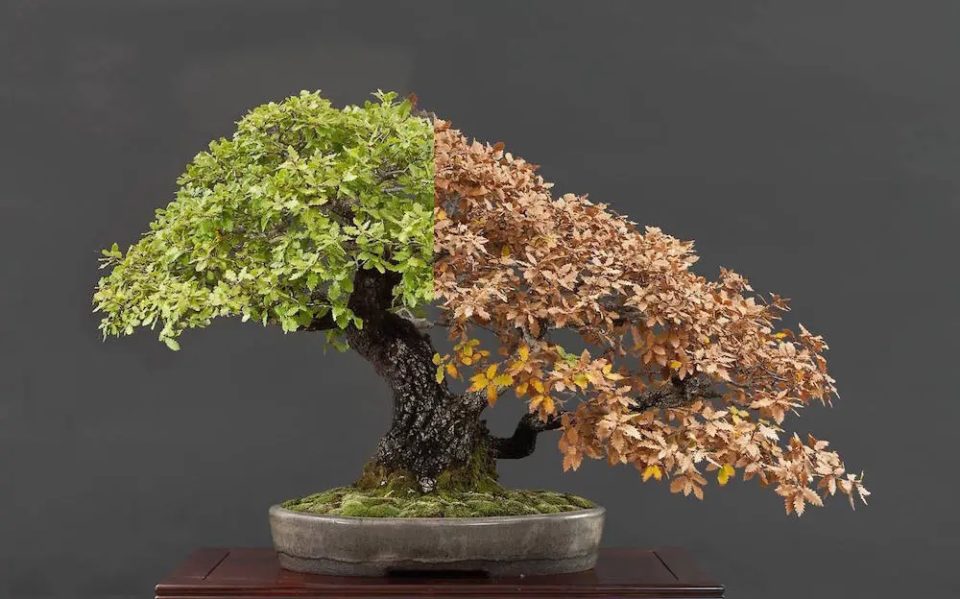It might take a lot of time to grow a gorgeous bonsai shrub into a lovely plant. If you see symptoms indicating your bonsai is unwell, it’s simple to become alarmed and fear that your work and effort have been in vain.
Read this article for more info: why bonsai leaves turn black?
How can I tell if my bonsai tree is going to die?
Every species gives obvious signs that it is deteriorating, and you may identify a sick species by looking at the bonsai leaf, which becomes brown or yellow.
A yellow leaf indicates:
During other seasons of the year, Yellow leaves might be an indication of several various problems.
Overwatering: Excessive moisture is the greatest frequent cause of yellowing leaves.
The type and the weather will determine how much water bonsai require.
Underwatering: Underwatering could also result in yellow leaves. The summertime is when this happens most commonly.
More sunlight: Certain kinds of bonsai leaflets become yellow when exposed to excessive sunshine, depending on the type.
Disease: Some species of bonsai are prone to a condition that causes their leaflets to become yellow.
Brown leaves indicate:
Overwatering: Weak bases are unable to supply the minerals to the bonsai plant, causing the leaflets to wilt and become brown.
Absence of sunshine: Different bonsai plant types require different amounts of sunlight. Your plant leaves may turn dark if they don’t receive enough sunshine.
Unsuitable environment: bonsai should be kept outdoors and Putting bonsai plants indoors for an extended period might damage them.
Pests: If your bonsai is attacked by insects, you might detect brown stains on the leaves.
Nutrient deficiency: It’s critical to ensure your bonsai receives enough nutrients or else the leaf turns brown.
Wilting or Drooping Leaves:
A danger sign is fading or sagging leaflets on the plant. Inadequate maintenance is the source of this issue. The young leaves appear yellow before they fall. Examine how you’re maintaining your plant, there might be a chance that if your plant is wilting but you won’t see the color change in the leaves.
No leaves in the plant:
Throughout the autumn or spring, it’s very natural to shed all the leaflets, but in certain circumstances, it shows some problems. Trees can lose their leaves under stress. Two frequent causes of bonsai plants losing leaves are relocation and repotting, as well as other problems like inadequate sunshine, excessive watering, underwatering, or oversea lighting, etc.
Root Rot:
In bonsai, root decay is a prevalent problem that could kill the plant. A root infection can happen if there is too much moisture, which hinders the root from obtaining oxygen, or if the plant contracts a fungus or bacteria that creates moisture. Root rot occurs underneath the earth, which makes it difficult to find out but if you notice the leaves’ color turn to yellow or brown that is a sign.
How to Resurrect a Sick Bonsai Tree
- Water your plant properly by first comprehending the issue, following which you should look at your plant’s needs and how to water them.
- Provide Enough Sunshine
- any plant cannot survive without adequate sunlight. This quantity varies per variety, so it’s critical to understand your plant.
- Remove any leaf litter.
- remove any dead or old leaves from the plant to let the bonsai plant grow stronger.

